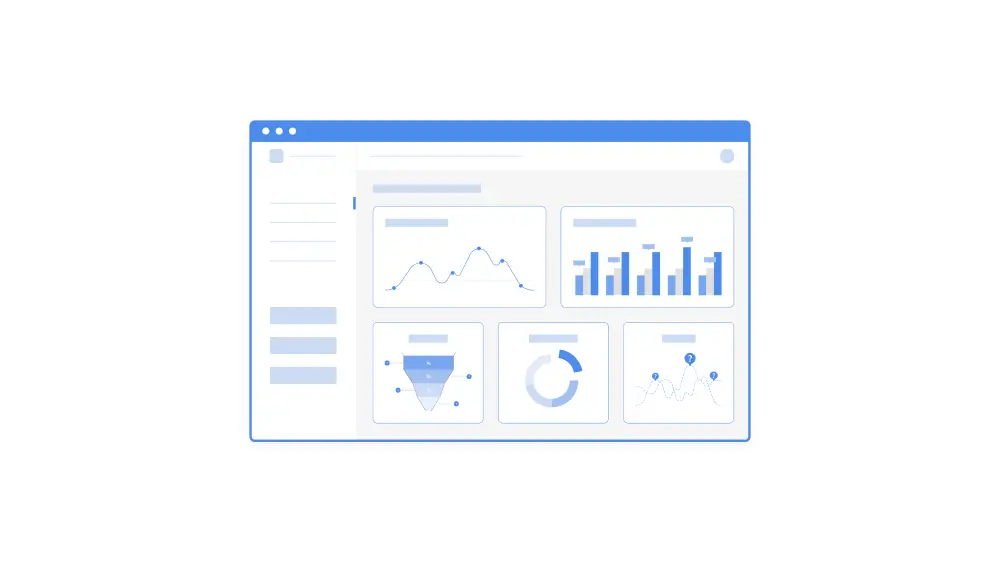Metrics are a vital part of B2B SaaS ABM (account-based marketing) campaigns; they're essential for knowing what’s working, what’s not, and what needs to be improved, expanded, or scrapped. If you aren’t able to accurately track and easily organize and access them, you’ll have a tough time getting any kind of sense of how your campaign is performing or reporting on that performance.
This blog will explain five simple steps on the metrics of an ABM campaign you should track and how to track them.
1. Create a metrics dashboard
If you haven’t yet set up a metrics dashboard for your ABM campaigns, this should be your starting point. A metrics dashboard is necessary to easily store and view your key metrics across your campaigns. To get started with your own dashboard, request and create your copy of our metrics dashboard template using the form below.
2. Input the metrics into the dashboard
It is highly recommended to use a sales enablement tool, like Apollo, Outreach.io, or Salesloft from which you can export the data of a specific campaign to include it in an aggregated spreadsheet dashboard. Those tools help tremendously in accurately tracking metrics like open rate, reply rate, and bounce rate while reducing the need to manually check these metrics, email by email or call by call.
3. Analyze every metric
Every number tells you something about your campaign:
- Open rate: if the subject line and sender of the email are interesting enough to be opened by the prospect.
- Click rate: if the content or links of the email are catching your prospect’s attention.
- Connection rate: this number applies only to LinkedIn connections. It is a good indicator of whether your connection requests are appealing to the prospect.
- Bounce/spam block rate: indicates the quality of your lead generation and your sending domain health. If your list of contacts does not have verified emails, the email domain you are sending from has low health, or the contacts are low-fit and unlikely to be interested in your solution, you’ll see this rate increase.
- Opt-out rate: indicates the email is not well received by the prospects.
- Reply rate: this tells you if your messaging is not strong enough to provoke a reply from your prospects.
In the case of having a low open rate, it is highly possible that the title needs to be checked and changed. When you have a high bounce or spam block rate, it is most likely due to the quality of the prospect list you are using, so you should get another one or create your own.
That's why having those metrics is so important: you can see exactly what's working in your campaigns and what’s not and start tweaking, adapting, and testing accordingly.
4. Change and improve what isn't working
From our experience running ABM campaigns for B2B SaaS companies, we have found that if you are seeing these numbers after a month of testing it’s a strong indicator that something in your campaign needs to be modified:
- Open rate: <10%
- Click rate: <5%
- Connection rate: <10%
- Bounce/spam block rate: >40%
- Opt-out rate: >25%
- Reply rate: <5%
Where does the problem lie? It could be the prospects you are sending to (e.g. the filtering criteria you are using are not strong), your messaging, or even the health of the domain you're using to send the emails. It all depends, but if you have these metrics at hand and are regularly inputting them into a dashboard that is updated daily, it is much easier to locate the root of your campaign’s problems.
In one recent example, one of our own clients was experiencing very poor results with their email and LinkedIn outreach campaigns. In particular, we noted that reply rates were consistently lower than expected, indicating that the content of the email was not intriguing or immediate enough for our prospects. In response, we started contacting only the prospects attending certain events that our client was related to and the results were out of this world. Keep in mind that at times, it is not the messaging, the prospects you're contacting, or the channels you're using that are the difference between success and failure, it is the when and where you're reaching them.
5. Keep tracking and improving
Never stop following the metrics and consistently updating your internal trackers and dashboards. It will be essential to building and reporting on the success of your campaigns and targeting the sources of their failure.
If you’re looking for more resources on setting up a successful B2B SaaS campaign, start with our resources on “ABM basics: building effective ABM lists” and “5 steps to create great ABM messaging.”
